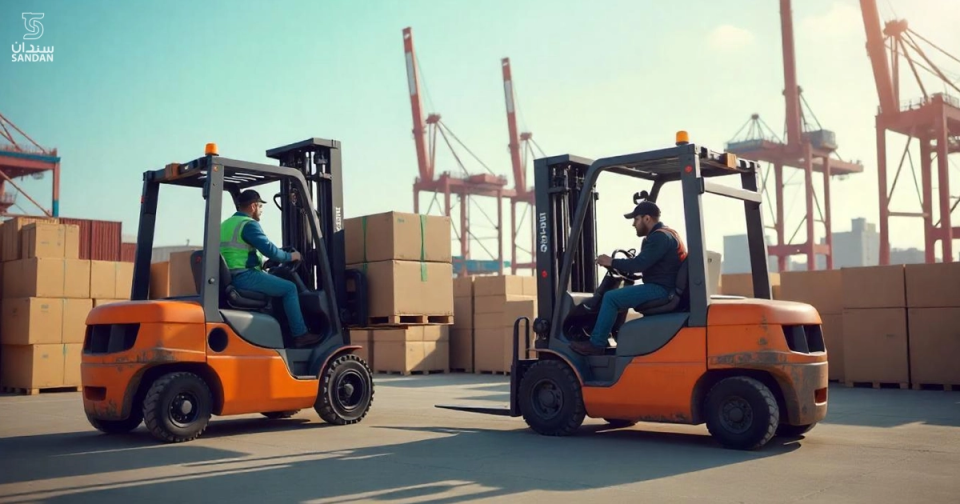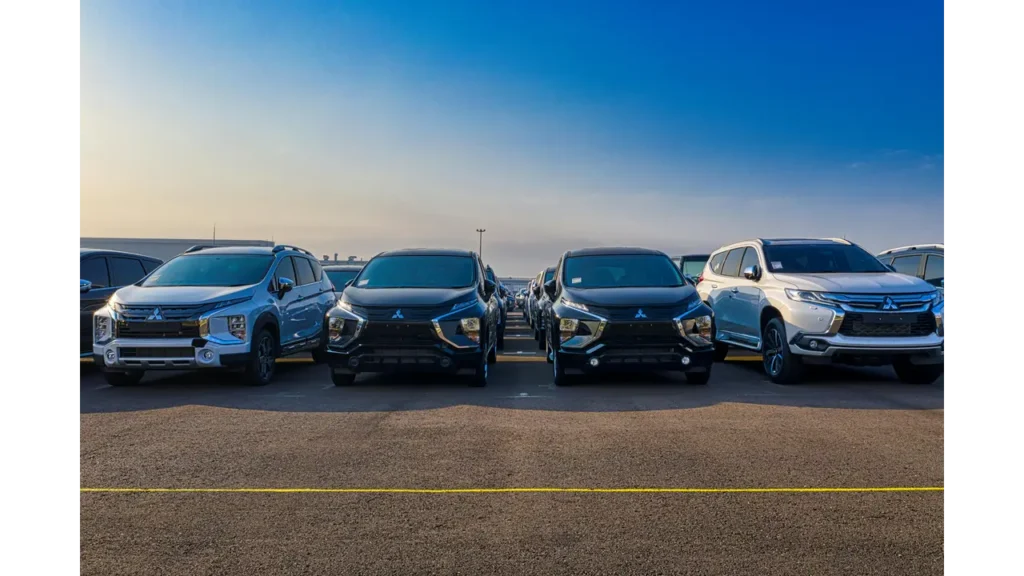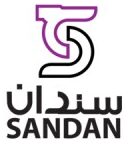As Oman’s infrastructure, construction, mining, and logistics sectors continue to grow under Vision 2040, the demand for reliable and well-located heavy equipment workshops has increased significantly. Businesses operating fleets of excavators, cranes, loaders, and industrial-grade machinery require more than just standard vehicle garages — they need robust, high-capacity facilities designed for heavy-duty servicing.
The location of such workshops is just as critical as their design. Access to zoned industrial land with proper infrastructure is key to ensuring efficient operations. This is where the concept of a heavy equipment workshop land Oman becomes essential for investors and operators looking to establish or expand their workshop facilities in a compliant and cost-effective way.
Whether you’re a contractor, equipment dealer, or logistics firm, understanding what goes into setting up a heavy equipment workshop — from land requirements to technical specifications — will ensure long-term operational success. In this blog, we’ll walk you through the design considerations, land zoning needs, regulatory approvals, and why choosing a location like Sandan Industrial Park can fast-track your setup while minimizing costs.
Understanding Heavy-Equipment Workshops
A heavy equipment workshop is a specialized facility designed for the maintenance, repair, and servicing of industrial-grade machinery. These include earthmoving equipment, hydraulic cranes, forklifts, compactors, drilling rigs, and other high-tonnage tools used in construction, mining, agriculture, and logistics.
Unlike standard car service centers, these workshops must accommodate large machines that may weigh several tons, require hydraulic lifts, or need custom jigs and fixtures for repair. This means higher ceilings, reinforced flooring, larger access bays, and more robust electrical and ventilation systems.
Types of Equipment Typically Serviced
Heavy equipment workshops are often configured to handle:
#1 Excavators and Bulldozers
These earth-moving machines are essential for construction, mining, and roadwork. Servicing includes hydraulic system checks, track repairs, blade and bucket alignment, and engine diagnostics to ensure peak performance under harsh operating conditions.
#2 Forklifts and Reach Trucks
Used in warehouses and logistics hubs, forklifts and reach trucks require precise servicing for safe load handling. Maintenance involves battery or LPG system checks, lift mechanism tuning, tire replacement, and safety feature inspections.
#3 Cranes and Boom Lifts
Cranes and aerial lifts need specialized care due to their height, weight, and hydraulic systems. Servicing focuses on hoist cables, counterweights, outriggers, control panels, and boom articulation to ensure stability and operational safety.
#4 Concrete Mixers and Pavers
Vital for construction and road-laying projects, these machines demand regular drum cleaning, lubrication of moving parts, hydraulic system upkeep, and engine performance checks to maintain consistency in material handling and application.
#5 Drilling Machines and Mobile Compressors
These are critical in the oil, gas, and construction industries. Maintenance includes inspection of drill bits, rotation systems, compressor pressure valves, filters, and ensuring proper lubrication to avoid downtime and mechanical failures.
Each type of machinery demands different servicing setups — from pit systems for undercarriage inspections to heavy-duty cranes for engine overhauls.
Key Differences from Standard Vehicle Workshops
Standard automotive workshops primarily handle passenger vehicles and light trucks. In contrast, heavy equipment workshops:
- Require reinforced concrete flooring to bear multi-ton loads
- Must have larger shutter doors and wider aisles for movement
- Need advanced HVAC systems to control dust, fumes, and heat
- Often include built-in oil/waste separation and heavy fluid recycling units
Regulatory and Operational Complexities
Setting up a heavy equipment workshop also involves meeting rigorous zoning, safety, and environmental standards. Oman’s municipalities and the Ministry of Commerce, Industry & Investment Promotion (MoCIIP) have specific regulations regarding noise control, emission handling, and building safety for such operations.
That’s why securing the right heavy equipment workshop land in Oman becomes not just a logistical requirement but a strategic business decision. Choosing compliant, pre-zoned industrial land saves time, reduces setup delays, and ensures long-term scalability.
Key Design Specifications for Heavy-Equipment Workshops
Load-Bearing Foundations & Flooring Specs
Heavy-equipment workshops handle extremely high loads daily. The flooring must be constructed using reinforced concrete with a high compressive strength, typically 30 to 40 MPa. This ensures durability under the weight of cranes, loaders, and bulldozers. Reinforced steel mesh is often embedded to prevent surface cracking over time.
Ceiling Height & Crane Beam Installations
Overhead cranes are a standard feature in such workshops. This demands ceiling clearances of 8 to 12 meters, depending on equipment height and lifting needs. Crane beams must be precisely aligned and installed to manage heavy vertical and horizontal movements without vibration or structural strain.
Oil, Grease, and Waste Management Systems
Workshops must have dedicated channels and separators for oil, grease, and coolant disposal. Built-in drainage systems should include filters and sediment traps to ensure environmental compliance and safe waste disposal, especially in Omani industrial zones.
Access Ways, Turning Radius, and Loading Bays
Design must accommodate large machinery movement. Access doors should be no less than 5 meters wide and 6 meters high. The interior turning radius must allow for articulated machinery. External loading bays with reinforced ramps improve operational flow and prevent bottlenecks during servicing.
Fire Safety, Ventilation, and Lighting
Fire-rated materials, automatic extinguishing systems, and smoke vents are required. Natural and forced ventilation help remove fumes, especially in welding or engine testing areas. Energy-efficient LED lighting with high-lumen output ensures clear visibility in all corners of the workspace.
Land Requirements for Heavy-Equipment Workshops
Minimum Plot Size Recommendations
The minimum plot size to set up a heavy equipment workshop in Oman ranges from 2,000 sqm to 10,000 sqm, depending on whether it includes outdoor storage, testing space, or logistics docks. This space allows room for building, maneuvering, and future expansion.
Power, Water & Drainage Infrastructure
Reliable 3-phase power is essential for welding units, hydraulic lifts, and air compressors. The site should have access to industrial-grade water lines and dedicated drainage systems for cleaning bays and machinery washing zones, including grease traps and sump pits.
Road Access and Trailer Maneuvering Room
Road access must support flatbeds and trailer trucks. Internal roads need to be at least 9 meters wide with reinforced turning junctions. Sandan and similar industrial areas near Muscat provide such logistics-ready access, making them ideal for setting up a heavy equipment workshop in Oman.
Zoning Requirements and Compliance
Only land zoned for light or heavy industrial use can accommodate these setups. The Ministry of Commerce, Industry and Investment Promotion (MoCIIP) and municipal bodies govern zoning approvals. Sandan, Sohar, and Salalah industrial parks already cater to these zoning norms with flexible leasing options.
Integration with Broader Supply Chains
When choosing a heavy equipment workshop in Oman, it’s crucial to consider proximity to key roadways, suppliers, and customers. Sites like Sandan offer a strategic balance of infrastructure, permit support, and regional accessibility for long-term operational success.
Regulatory Approvals & Permits
MoCIIP and Municipal Clearances
Setting up a heavy equipment workshop in Oman begins with approvals from the Ministry of Commerce, Industry, and Investment Promotion (MoCIIP). Entrepreneurs must first register their business activity under the correct industrial classification and acquire initial site approval. Local municipal authorities are also involved in granting location-based permits, especially when workshops are situated near urban or semi-urban areas.
Environmental and Safety Approvals
Given the nature of operations—such as heavy machinery movement, use of oils and lubricants, and noise—environmental clearances are mandatory. Oman’s Environmental Authority requires workshops to install proper oil-water separation systems, emission control measures, and noise-reduction infrastructure. Fire and safety clearances from Civil Defense are also necessary, particularly for workshops handling welding or fuel-based testing.
Construction Permit Process
Once the land is secured—either leased or owned—applicants must submit architectural plans to municipal authorities for construction approval. These plans must comply with zoning regulations and industrial design standards. Most industrial parks, including Sandan, offer facilitation desks to speed up this process.
Special Considerations for Noise, Waste & Emissions
Workshops must provide documentation on how they will manage waste oil, grease, and hazardous by-products. Noise barriers or designated operational timings may be required depending on proximity to mixed-use areas. Compliance with Oman’s air quality and water discharge laws is monitored periodically, and failure to meet standards may lead to penalties or permit revocation.
Cost Estimations & Budgeting
Land Cost vs. Construction Cost
The cost of acquiring heavy equipment workshop land in Oman can vary widely depending on the location. In places like Sandan, land lease options start at competitive industrial rates with infrastructure already in place. Construction costs typically range from OMR 90 to 150 per sqm, based on the complexity of foundations, crane installations, and fit outs.
Permit Fees, Deposits & Professional Services
Expect to allocate OMR 5,000 to 10,000 for permits, approvals, and municipality fees. Hiring licensed engineers and consultants to design, document, and submit plans is another essential expense, averaging OMR 2,000 to 4,000, depending on project scope. Some industrial parks may bundle facilitation services with land leases.
Machinery Handling and Installation Expenses
Transporting and installing cranes, lifts, and compressors requires heavy-duty logistics and skilled technicians. Depending on the machinery size, these costs could range from OMR 10,000 to 30,000, including offloading and setup. Safety certifications, load testing, and calibration are often part of this stage.
Example: Budget Breakdown for a 1,000 sqm Setup
Here’s a rough estimation for a standard 1,000 sqm heavy equipment workshop in Oman:
- Land lease (annual): OMR 6,000
- Construction cost: OMR 100,000
- Permits & approvals: OMR 8,000
- Machinery installation: OMR 20,000
- Professional services: OMR 3,000
- Total Estimated Cost: OMR 137,000
This budget may vary based on material selection, land location, and the scale of operation, but it serves as a realistic starting point for businesses evaluating heavy equipment workshop land opportunities.

Site Selection Tips: What to Prioritize?
Proximity to Industrial Corridors and Target Clients
When selecting land for a heavy equipment workshop in Oman, location is everything. Prioritize proximity to key construction corridors, mining zones, and infrastructure development sites. Establishing your workshop near industrial hubs such as Barka, Sohar, or Salalah can minimize response times, increase demand visibility, and reduce transport costs for heavy machinery.
Scalability and Vehicle Flow Considerations
The land must allow for future expansion without disrupting ongoing operations. Evaluate how the plot can accommodate additional bays, parking equipment trailers, or upgraded warehousing if needed. Look for ample turning radius, wide access roads, and ingress/egress points to avoid traffic bottlenecks—especially important for workshops dealing with large equipment like cranes or graders.
Soil Quality and Topography
The weight of heavy-duty equipment requires strong subsoil and minimal land preparation. Conduct a geotechnical analysis to ensure the ground can bear dynamic and static loads. Sloped terrain might increase site preparation costs and complicate machinery movement, so flat plots are generally preferred.
Access to Ports, Highways, and Workforce
Easy connectivity to ports such as Muscat, Sohar, or Duqm, along with direct highway access, ensures streamlined logistics. This is particularly important for companies servicing oil and gas, mining, or construction clients that frequently require transportation of equipment in and out of the facility.
Choosing the right heavy equipment workshop land in Oman involves balancing current operations with future growth, while ensuring efficiency in access, safety, and build-readiness.
Sandan Industrial Park: Oman’s Heavy Equipment Hub
#1 Heavy-Equipment-Ready Land Plots
Sandan Industrial Park offers pre-zoned, build-ready plots specifically designed for workshops and logistics facilities. With robust infrastructure, high load-bearing roads, and designated zones for automotive and heavy equipment services, it caters directly to Oman’s industrial-scale workshop demands.
#2 Strategic Location with Logistical Advantages
Located just 15 minutes from Muscat Airport and easily accessible from major highways, Sandan offers unmatched convenience for businesses engaged in construction, transport, and logistics. For companies that regularly move equipment to and from project sites, this connectivity translates into substantial operational savings.
#3 Support with Permits and Industrial Fit-Outs
One of Sandan’s strongest differentiators is its dedicated facilitation services for tenants. From obtaining MoCIIP permits to coordinating municipal approvals and utility connections, Sandan simplifies the setup process. This accelerates project timelines and helps avoid common bureaucratic delays that can stall heavy equipment workshop development.
#4 Ideal for Leasing or Expansion
With flexible lease models, scalable land parcels, and shared services like banks, F&B outlets, and car care, Sandan provides a turnkey environment for industrial tenants. For companies seeking heavy equipment workshop land in Oman with long-term viability, Sandan is a strategic and cost-effective base of operations.
Whether you’re an established operator or an international brand entering Oman’s industrial market, Sandan’s mix of location, infrastructure, and administrative support makes it the top contender.
Common Mistakes to Avoid
Mistake 1. Choosing Land Without Proper Industrial Zoning
One of the most critical errors businesses make when selecting land is overlooking zoning restrictions. Not all plots are approved for heavy equipment use. Setting up on non-industrial land can lead to delays, permit rejections, or even shutdown orders. Always verify that the land is zoned specifically for industrial use before proceeding.
Mistake 2. Underestimating Load-Bearing Requirements
Heavy equipment like excavators and cranes places enormous pressure on floors, foundations, and ramps. Failing to account for this in the design phase can lead to structural damage, expensive retrofitting, or equipment accidents. This is particularly important when acquiring heavy equipment workshop land in Oman, where terrain and soil composition may vary.
Mistake 3. Ignoring HVAC and Dust Control Needs
Workshops in Oman’s climate require strong ventilation and temperature control, especially when welding, grinding, or operating fuel-based machinery. Overlooking this can result in poor working conditions, equipment overheating, or regulatory violations. Dust control systems are equally crucial for protecting equipment and ensuring operator’s health.
Mistake 4. Not Budgeting for Future Expansion
Many operators plan only for immediate needs, underestimating future growth. Limited space for new bays, machinery, or office units can hinder operations later. Choose land with scalability potential and incorporate modular infrastructure designs from day one.
Tips for Fast-Tracking Setup
Tip 1. Engage Industrial Consultants Early
Working with consultants who specialize in industrial development in Oman can drastically shorten timelines. They understand regulatory nuances, environmental clearance protocols, and the optimal facility specs for heavy equipment operations.
Tip 2. Secure Pre-Approved Land Like Sandan
Choosing pre-approved, infrastructure-ready land within zones like Sandan Industrial Park helps you avoid bureaucratic delays. These parks come with utilities, road access, and MoCIIP-aligned zoning for workshops, making the setup process smoother and faster.
Tip 3. Lock Equipment Specs Before Finalizing Layout
Finalizing equipment types and dimensions early is essential. It ensures accurate planning of electrical loads, door heights, service bay spacing, and crane beam placement, eliminating costly redesigns later.
Tip 4. Design for Growth with Modular Layouts
Modular and scalable layouts allow you to add bays, expand storage, or shift work zones without disrupting ongoing operations. This flexibility is key when investing in heavy equipment workshop land in Oman, especially in growing industries like construction, mining, or logistics.
With proper planning and the right partnerships, your heavy-equipment workshop can be up and running efficiently, ready for both today’s demands and tomorrow’s expansion.
FAQs
What is the minimum land size required for a heavy equipment workshop in Oman?
Typically, a minimum of 1,000 to 2,000 sqm is required, depending on the type of equipment serviced. Workshops for large fleets or multiple bays may require 5,000+ sqm to accommodate turning radius, parking, and future expansion.
Do I need a special permit to operate a heavy equipment workshop?
Yes. You must obtain approvals from the Ministry of Commerce, Industry and Investment Promotion (MoCIIP), local municipalities, and environmental authorities. Fire safety and zoning compliance are mandatory.
Can I lease heavy equipment workshop land in Oman, or must I purchase it?
Both options are available. Industrial parks like Sandan offer flexible leasing terms on pre-zoned plots, allowing you to avoid the high capital burden of land purchase while retaining long-term operational control.
Are there financing options available for building a workshop in Oman?
Yes. Local banks, Islamic finance institutions, and Oman Development Bank offer SME-friendly financing for industrial construction, equipment, and fit-outs.
What infrastructure should I prioritize when selecting land for a workshop?
Look for strong road access, power supply, drainage systems, and loading bay compatibility. Also, ensure the land is zoned for industrial use and complies with MoCIIP regulations.

Conclusion
Setting up a heavy equipment workshop is more than laying concrete and steel—it’s about future-proofing your business with the right land, design, and regulatory alignment. From load-bearing floors to smart ventilation, every element counts when working with high-capacity machinery.
Choosing the right location can drastically affect your long-term success. Heavy equipment workshop land in Oman offers enormous potential, especially when sourced from purpose-built parks like Sandan. With its proximity to Muscat, pre-approved plots, and industry-specific support services, Sandan provides a launchpad for growth, efficiency, and compliance.
Whether you’re an established brand scaling operations or a newcomer entering Oman’s booming logistics and construction markets, a well-planned workshop is your foundation for operational excellence.
Looking to fast-track your workshop setup? Explore land options and book a consultation today at Sandan Industrial City — where your heavy-equipment operations can thrive.












